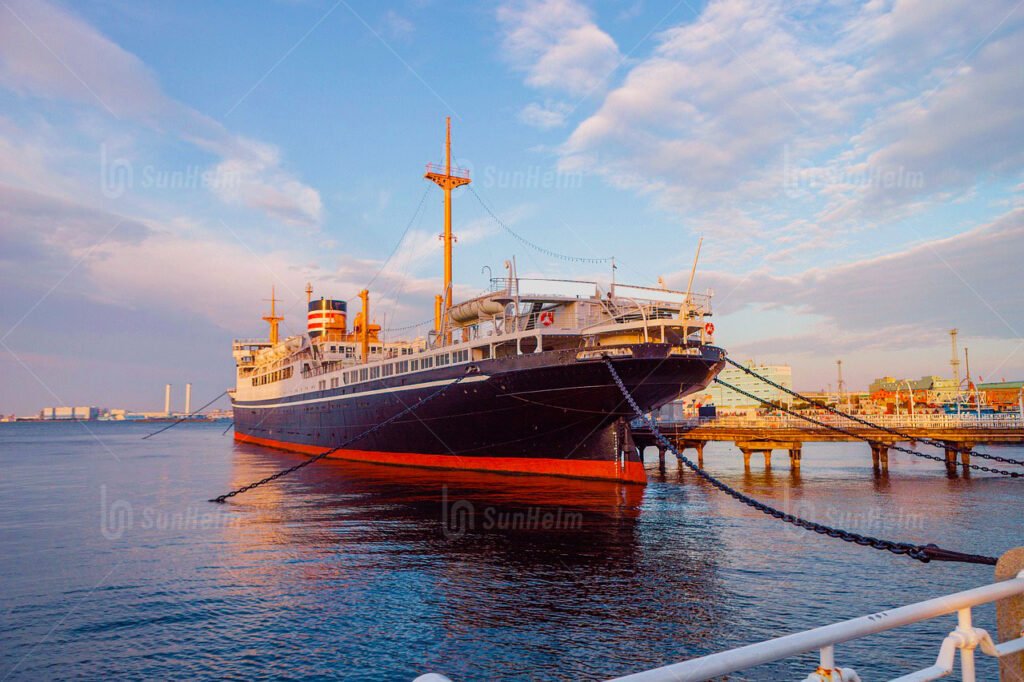What Is Mooring?
Mooring means fixing a ship in one place using ropes, anchors, or other equipment. It keeps the vessel from drifting with the wind, tide, or current. Mooring allows a ship to stay steady and safe for loading, unloading, or waiting.
The word “mooring” comes from the old Dutch word meren, which means “to anchor or stop.” It can be both a verb (to moor a ship) and a noun (the ropes, anchor, or point where the ship is tied).

Common Types of Mooring and Where They’re Used
Depending on where and how they are used, mooring systems come in different types:
1. Dock or Pier Mooring
Ships tie their mooring ropes to bollards or rings on a dock. This is the most common type, found in ports and harbors.
2. Buoy Mooring (Swing Mooring)
In open water, ships connect to buoys. The buoys are anchored to the sea floor with chains and anchors. This type allows the ship to swing freely with the tide or wind.
3. Multi-Point or Taut-Line Mooring
This method is used for offshore platforms or large ships. Several anchors and ropes hold the structure in place from different directions, giving it extra stability.
Tools and Equipment Used in Mooring
A complete mooring system uses several key tools:
1. Mooring Ropes
These ropes connect the ship to a dock or buoy. They’re made of strong materials like nylon, polypropylene, or HMPE (high-strength synthetic fiber). Mooring ropes absorb tension and hold the ship steady.
2. Anchor Chains
Chains link the anchor to the buoy or the ship. Their weight helps to create a curve (called a catenary) that adds strength and flexibility to the system.
3. Anchors
Anchors dig into the sea floor and hold everything in place. There are different types, like mushroom anchors, drag anchors, and suction anchors, depending on the seabed.
4. Buoys
These float on the water surface and mark the mooring spot. Ships tie their ropes to the buoy, which connects to an anchor below.
5. Support Equipment
This includes:
- Bollards: strong posts on docks for tying ropes
- Quick-release hooks: allow fast and safe disconnection
- Fairleads and winches: guide and tighten ropes
- Fenders: protect ships from hitting docks
How Mooring Works: Step-by-Step
Here’s how a mooring operation usually works:
- Choose the Location
Check water depth, tide, wind, and seabed conditions. Choose the best spot and mooring type (dock, buoy, or offshore). - Set the Anchor
Place the anchor on the sea floor. Then connect the chain to the anchor and attach the buoy or dock system. - Tie the Ship
Use mooring ropes to connect the ship to the dock, buoy, or mooring point. Adjust the rope tension to keep it tight and steady. - Inspect and Monitor
Check ropes, chains, and anchors often. Look for damage, tangles, or wear from waves, salt, or marine growth. - Follow Safety Rules
Wear protective gear. Keep the deck clean. Use teamwork and proper tools. Follow procedures to avoid accidents.
Pros and Cons of Mooring
Advantages:
- Stable and Safe: Holds ships steady in various weather and sea conditions.
- Flexible: Works for many kinds of vessels—from small boats to floating platforms.
- Reusable: Mooring tools and systems can be used many times with proper care.
Disadvantages:
- Can Be Expensive: Offshore mooring needs strong gear, expert setup, and special ships for installation.
- Weather Sensitive: High winds and strong currents can affect rope tension and mooring safety.
- Limited Movement: Ships using buoy mooring may swing around with the tide, needing more space.
Final Thoughts: Why Mooring Matters
Mooring is a basic but essential part of shipping, offshore energy, and marine safety. It keeps vessels and platforms fixed in place so people and cargo stay safe.
A solid mooring system uses ropes, anchors, chains, buoys, and support tools. By following clear steps—choose location, set anchor, tie ropes, and inspect often—ships can moor safely and avoid accidents.
Understanding how mooring works helps anyone involved in marine work, from boat owners to port engineers. It’s not just about tying a ship; it’s about doing it right—with the right tools, clear steps, and safety in mind.
FAQ: Mooring Explained
1. Is mooring different from anchoring?
Yes. Mooring usually uses fixed systems like buoys or dock posts. Anchoring means dropping an anchor from the ship without a fixed system. Mooring is more stable and often used for long stays.
2. What types of mooring are there?
The common types include:
- Dock mooring: a ship ties to a pier or quay
- Buoy mooring: a ship ties to a floating buoy
- Multi-point mooring: used offshore with many ropes and anchors
3. Can small boats use mooring systems?
Yes! Small boats often tie to mooring buoys in marinas or calm waters. It’s a safe and easy way to keep them in place without using an anchor every time.
4. How often should mooring lines and equipment be checked?
You should check ropes, chains, anchors, and buoys regularly—especially after strong winds or storms. Worn or damaged gear should be replaced immediately.


